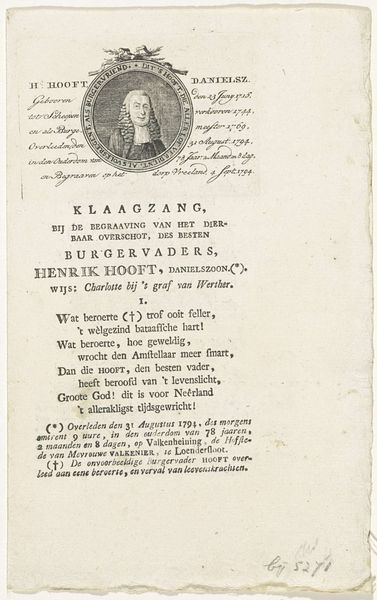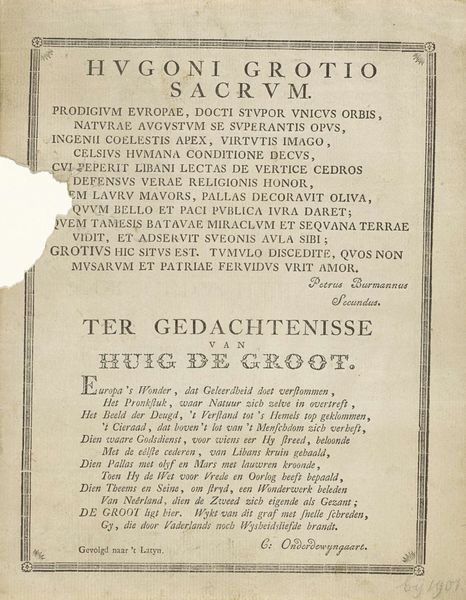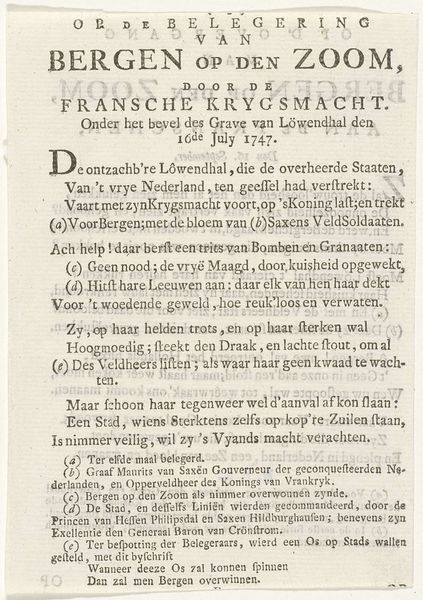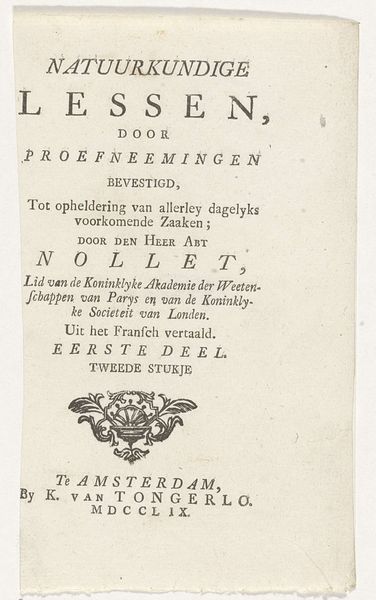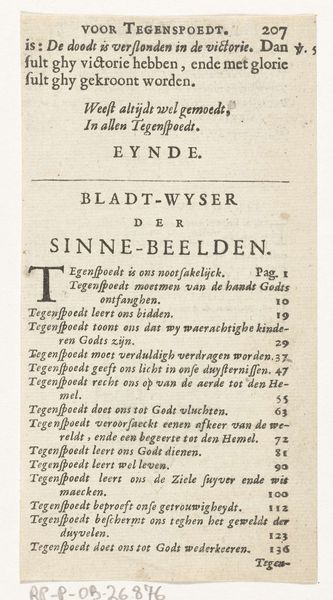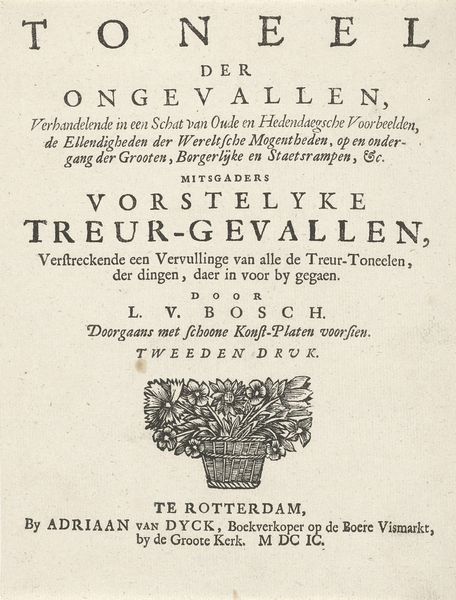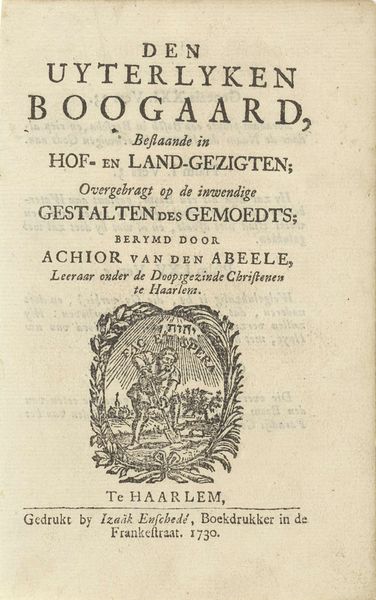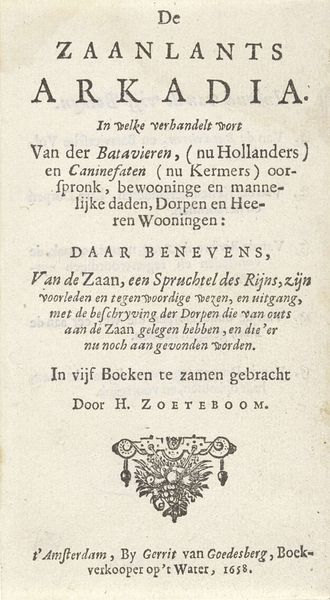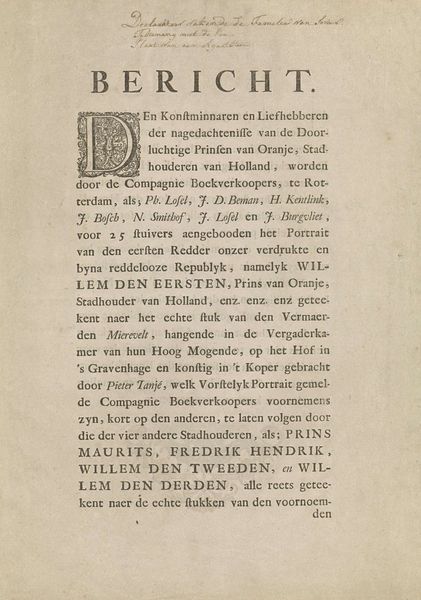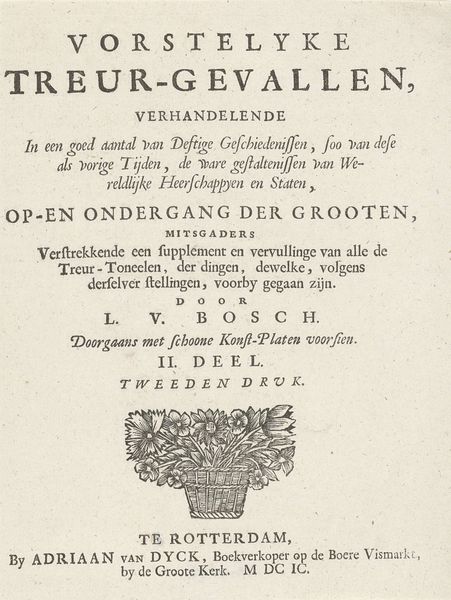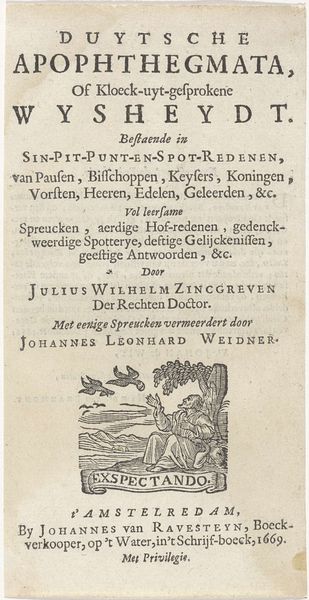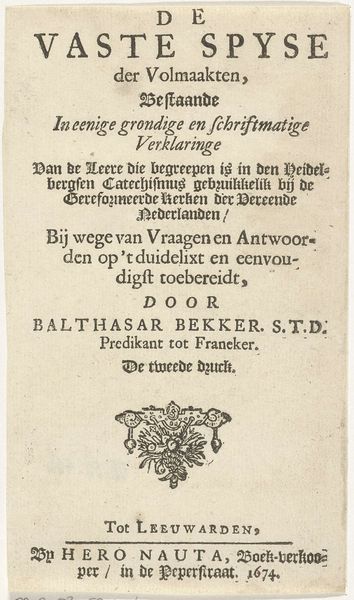
Dimensions: height 80 mm, width 75 mm, height 220 mm, width 135 mm
Copyright: Rijks Museum: Open Domain
Editor: So, this engraving, "Begrafenis van en klaagzang voor Hendrik Danielsz. Hooft," which translates to "Funeral and Lament for Hendrik Danielsz. Hooft," is from 1794. It's an anonymous print. The image is small, but something about the procession depicted inside the circular frame evokes a deep sense of tradition and respect. What symbols or visual cues jump out at you in this piece? Curator: The procession within the seal immediately grabs my attention. It represents not just a funeral, but the cultural memory surrounding Hendrik Hooft. Look closely: The neoclassical architecture indicates a desire to connect the city councilman to a world of civic virtue associated with Roman Republic. The circle format reinforces this sense of a self-contained, almost timeless ritual. Editor: Interesting. It's like framing a moment in history, and a tribute for this man? Curator: Precisely. Do you notice anything peculiar about who is, and isn't included, in this depiction? Think about it not just as an illustration of grief, but as a very pointed *statement* about who is important, and who shapes collective memory. The symbols around the engraving—the text and border ornamentation—amplify the sense of social importance of not only this individual, but the office of city leader. What psychological or cultural meaning do you think could be derived from using a Baroque illustrative style to depict what are otherwise contemporary buildings? Editor: Hmm, well the Baroque details emphasize the somber mood, giving this image both immediacy and this timelessness that you mentioned before. It's less a snapshot of a funeral, but instead creates a cultural anchor for this man. Curator: Precisely. It’s less about conveying accurate visuals than transmitting powerful symbols of legacy. Knowing more about Hoofst would perhaps contextualize why his contemporaries immortalized him using symbolic visual codes rather than something realistic. Editor: So by analyzing those details we can uncover a rich tapestry of social norms, political undertones and cultural values. Thank you, that's fascinating. Curator: Indeed. Visual culture acts as a mirror reflecting the values and ideals that shape a society's identity, even in moments of mourning.
Comments
No comments
Be the first to comment and join the conversation on the ultimate creative platform.
